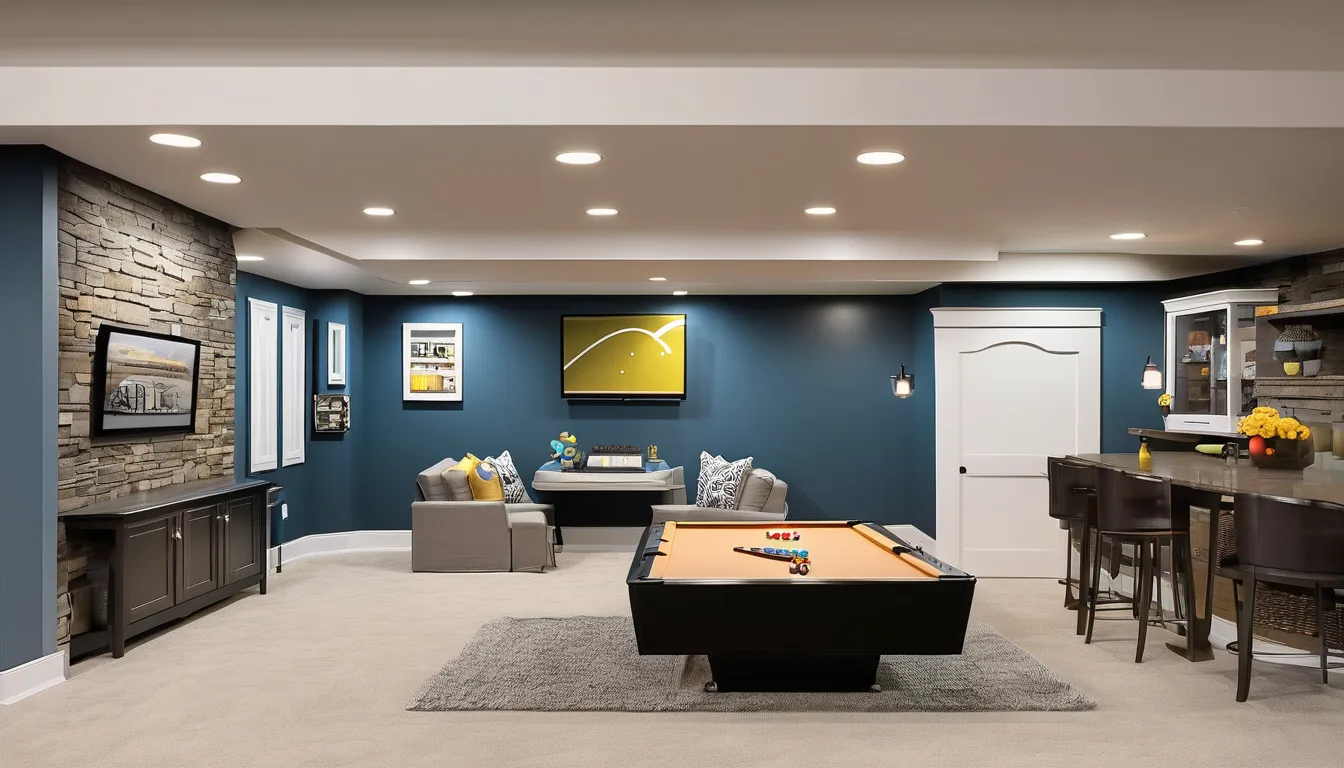When you’re considering converting your basement into a usable space, it’s crucial to focus on cost-effective strategies that encompass design, waterproofing, and layout. You’ll want to start by assessing the area’s potential while addressing any moisture issues that could compromise your efforts. With budget-friendly design ideas and smart layout considerations, you can create an inviting atmosphere without overspending. But before you jump into the details, it’s important to understand how each element interacts to ensure a successful transformation. What might be the first step to take on this journey?
Assessing Your Basement waterproofing Space
When assessing your basement space, start by evaluating its size, layout, and potential for conversion. Measure the dimensions to understand how much usable area you have.
Consider the height of the ceilings; if they’re too low, it might limit your design options.
Next, think about the layout. Are there support beams or columns that could disrupt your plans?
Take note of existing features like windows and doors, as these will influence natural light and access. A well-placed window can make a big difference in the overall feel of the space.
Also, consider the current condition of the basement. Is it dry, or do you notice signs of moisture?
Assess the walls and flooring for any potential issues that could hinder your conversion process.
Budget-Friendly Design Ideas
Your basement’s transformation can be both stylish and budget-friendly with a few smart design ideas.
You don’t need to break the bank to create a welcoming space. Here are three budget-friendly design tips to consider:
1. Repurpose Furniture: Look around your home for items you no longer use. A vintage dresser can become a stylish media console, while an old couch can be reupholstered for a fresh look.
This not only saves money but adds character.
2. Use Light Colors: Light paint colors can make your basement feel larger and brighter.
Consider soft whites, pale grays, or pastel shades for walls and trim. This creates an airy atmosphere without the cost of extensive renovations.
3. Incorporate Multi-Functional Pieces: Invest in furniture that serves multiple purposes, like a sofa bed or storage ottomans.
These items maximize space and functionality, making your basement more versatile without extra spending.
Essential Waterproofing Techniques
While transforming your basement into a functional living space, ensuring it’s properly waterproofed is crucial to prevent damage and maintain comfort.
Start by assessing the area for existing moisture issues. Look for cracks in the walls and floors, as these can be significant entry points for water. Filling these cracks with hydraulic cement or epoxy can create a solid barrier against moisture.
Next, consider installing a sump pump. This device collects water and pumps it away from your basement, especially during heavy rains or flooding.
Additionally, ensure your gutters and downspouts direct water away from your foundation. Clear and maintain them regularly to prevent overflow.
Another essential technique is applying a waterproof sealant on interior walls. Choose a sealant designed specifically for basements to create an effective moisture barrier.
If your budget allows, you might also want to explore exterior waterproofing options, such as excavation and membrane installation, which can provide long-lasting protection.
Smart Layout Considerations
To maximize the potential of your basement conversion, you’ll want to carefully consider the layout. A well-thought-out arrangement can enhance functionality and flow, making the space more enjoyable and practical.
Here are three key considerations:
- Zoning: Divide your basement into distinct areas for specific activities. Whether it’s a cozy lounge, a home office, or a play area, zoning helps everyone know where to go for different purposes.
- Accessibility: Keep pathways clear and ensure easy access to all areas. Consider how furniture placement affects movement, and avoid overcrowding spaces. This will make the environment feel more open and inviting.
- Integration: Think about how your basement will connect with the rest of your home. Create transitions that feel seamless, whether through consistent design elements or strategic layout choices.
This integration enhances the overall aesthetic and unity of your living space.
Maximizing Natural Light
Bringing natural light into your basement can transform it from a dark, cramped space into a bright and inviting area. One of the most effective ways to do this is by installing larger windows or adding window wells. If your basement has existing windows, consider replacing them with energy-efficient models that allow more light in.
Another option is to use glass doors, which not only provide access to the outdoors but also let in abundant sunlight. You can also explore skylights or light tubes if your basement has access to the roof; these can be a game changer for illuminating the space.
Don’t forget about the power of mirrors. Position them strategically across from windows to reflect light throughout the room, making it feel even brighter.
Opt for lighter colors in your paint and furnishings to enhance the lightness of the space.
Lastly, keep your window areas clear of obstructions. Avoid heavy drapes; instead, use sheer curtains to let in as much light as possible while maintaining your privacy.
Conclusion
By following these cost-effective strategies, you can transform your basement into a functional and inviting space. Start by assessing the potential, tackle any moisture issues with essential waterproofing, and embrace budget-friendly design ideas. With a smart layout that zones activities and enhances natural light, you’ll create an area that’s both usable and appealing. So roll up your sleeves and get started on turning your basement into the perfect spot for relaxation or entertainment!


